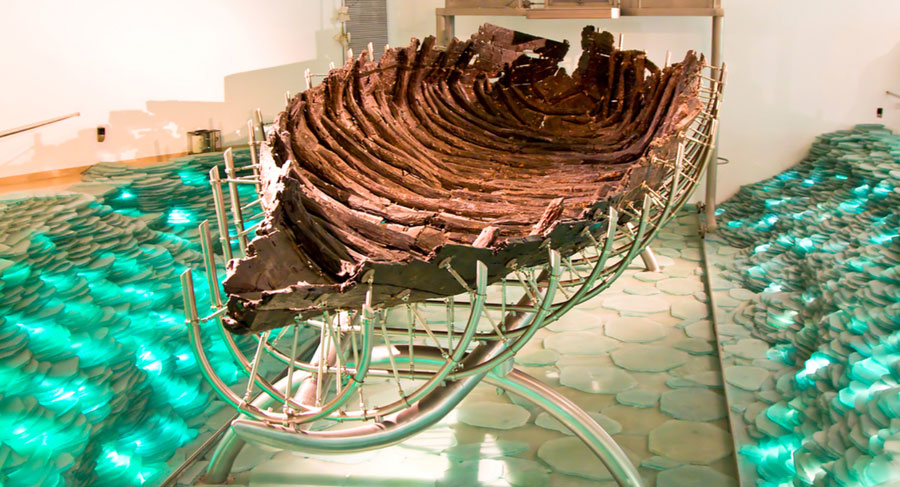The Barque of Saint Peter

AN article published in Newsweek on October 14, 1991 reported an archaeological discovery that once again confirms the truth of the Gospels. It is the remains of a boat measuring 7.9 metres by 2.2 metres with two wide decks at the prow and the stern. Found in the mud at the bottom of Lake Tiberias near Magdala (also called Tarichees and Migdal) and radiocarbon dated to the 1st century a.d. This boat bears witness to two events reported in the Gospels: the calming of the storm and the punishment of the Jewish people.
An arrowhead (a model used by Roman mercenaries) is, in fact, embedded in the boat. This makes it possible to relate the boat to the Jewish historian Flavius Josephus’ narration describing the revolt of his people against the Romans in 67 a.d. The Jews of Migdal who had raided a Roman camp were massacred in the city shortly afterwards. Many sought to escape by boat, but the next day Vespasian sent in archers and foot soldiers and the Jews “were sent to the bottom.” There were about 6,700 victims. This Jewish war would eventually lead to the fall of Jerusalem in 70, fulfilling the predictions of Our Lord Jesus Christ within the time limit “before this generation passes away” (Mk 13:30) and verifying the theology of Saint Paul.

Reconstruction of the boat with the two large decks.
The most interesting detail, however, has to do with the account of the calming of the storm in Mark 4:35-41. This archaeological discovery proves how truly precise Saint Mark’s historical testimony is, right down to his choice of prepositions. He reports what he heard Peter, the captain of the boat, say: “A great storm of wind arose, and the waves beat into the boat, so that the boat was already filling. And He (Jesus) was in the stern, on the cushion, sleeping.” He did not say that Jesus was “at the stern” as many translators have tried to correct Mark’s Greek, but “in(side) the stern.” Peter, meanwhile, was above at the helm on the wide stern deck, the existence of which the wreckage indicates. Jesus, Who was sleeping below, sheltered from the waves and the wind, did not hinder the manoeuvring of the barque.
The author of the article, however, out of narrow scientism that runs counter to the best attested historical data, lies about the Gospel text by writing that Jesus imposed silence on “the terrified disciples” Saint Mark, however, says something quite different: Jesus imposed silence on the raging wind and sea.
Brother Bruno de Jésus-Marie
Excerpt from Catholic Counter-Reformation no. 279, January 1992.